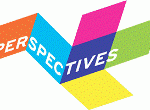 If I ever had any hope of “keeping up” with developments in the regulation of information technology—or even the nine specific areas I explored in The Laws of Disruption—that hope was lost long ago. The last few months I haven’t even been able to keep up just sorting the piles of printouts of stories I’ve “clipped” from just a few key sources, including The New York Times, The Wall Street Journal, CNET News.com and The Washington Post.
If I ever had any hope of “keeping up” with developments in the regulation of information technology—or even the nine specific areas I explored in The Laws of Disruption—that hope was lost long ago. The last few months I haven’t even been able to keep up just sorting the piles of printouts of stories I’ve “clipped” from just a few key sources, including The New York Times, The Wall Street Journal, CNET News.com and The Washington Post.
I’ve just gone through a big pile of clippings that cover April-July. A few highlights: In May, YouTube surpassed 2 billion daily hits. Today, Facebook announced it has more than 500,000,000 members. Researchers last week demonstrated technology that draws device power from radio waves.
If the size of my stacks are any indication of activity level, the most contentious areas of legal debate are, not surprisingly, privacy (Facebook, Google, Twitter et. al.), infrastructure (Net neutrality, Title II and the wireless spectrum crisis), copyright (the secret ACTA treaty, Limewire, Google v. Viacom), free speech (China, Facebook “hate speech”), and cyberterrorism (Sen. Lieberman’s proposed legislation expanding executive powers).
There was relatively little development in other key topics, notably antitrust (Intel and the Federal Trade Commission appear close to resolution of the pending investigation; Comcast/NBC merger plodding along). Cyberbullying, identity theft, spam, e-personation and other Internet crimes have also gone eerily, or at least relatively, quiet.
Where are We?
There’s one thing that all of the high-volume topics have in common—they are all moving increasingly toward a single topic, and that is the appropriate balance between private and public control over the Internet ecosystem. When I first started researching cyberlaw in the mid-1990’s, that was truly an academic question, one discussed by very few academics.
But in the interim, TCP/IP, with no central authority or corporate owner, has pursued a remarkable and relentless takeover of every other networking standard. The Internet’s packet-switched architecture has grown from simple data file exchanges to email, the Web, voice, video, social network and the increasingly hybrid forms of information exchanges performed by consumers and businesses.
As its importance to both economic and personal growth has expanded, anxiety over how and by whom that architecture is managed has understandably developed in parallel.
(By the way, as Morgan Stanley analyst Mark Meeker pointed out this spring, consumer computing has overtaken business computing as the dominant use of information technology, with a trajectory certain to open a wider gap in the future.)
The locus of the infrastructure battle today, of course, is in the fundamental questions being asked about the very nature of digital life. Is the network a piece of private property operated subject to the rules of the free market, the invisible hand, and a wondrous absence of transaction costs? Or is it a fundamental element of modern citizenship, overseen by national governments following their most basic principles of governance and control?
At one level, that fight is visible in the machinations between governments (U.S. vs. E.U. vs. China, e.g.) over what rules apply to the digital lives of their citizens. Is the First Amendment, as John Perry Barlow famously said, only a local ordinance in Cyberspace? Do E.U. privacy rules, being the most expansive, become the default for global corporations?
At another level, the lines have been drawn even sharper between public and private parties, and in side-battles within those camps. Who gets to set U.S. telecom policy—the FCC or Congress, federal or state governments, public sector or private sector, access providers or content providers? What does it really mean to say the network should be “nondiscriminatory,” or to treat all packets anonymously and equally, following a “neutrality” principle?
As individuals, are we consumers or citizens, and in either case how do we voice our view of how these problems should be resolved? Through our elected representatives? Voting with our wallets? Through the media and consumer advocates?
Not to sound too dramatic, but there’s really no other way to see these fights as anything less than a struggle for the soul of the Internet. As its importance has grown, so have the stakes—and the immediacy—in establishing the first principles, the Constitution, and the scriptures that will define its governance structure, even as it continues its rapid evolution.
The Next Wave
Network architecture and regulation aside, the other big problems of the day are not as different as they seem. Privacy, cybersecurity and copyright are all proxies in that larger struggle, and in some sense they are all looking at the same problem through a slightly different (but equally mis-focused) lens. There’s a common thread and a common problem: each of them represents a fight over information usage, access, storage, modification and removal. And each of them is saddled with terminology and a legal framework developed during the Industrial Revolution.
As more activities of all possible varieties migrate online, for example, very different problems of information economics have converged under the unfortunate heading of “privacy,” a term loaded with 19th and 20th century baggage.
Security is just another view of the same problems. And here too the debates (or worse) are rendered unintelligible by the application of frameworks developed for a physical world. Cyberterror, digital warfare, online Pearl Harbor, viruses, Trojan Horses, attacks—the terminology of both sides assumes that information is a tangible asset, to be secured, protected, attacked, destroyed by adverse and identifiable combatants.
In some sense, those same problems are at the heart of struggles to apply or not the architecture of copyright created during the 17th Century Enlightenment, when information of necessity had to take physical form to be used widely. Increasingly, governments and private parties with vested interests are looking to the ISPs and content hosts to act as the police force for so-called “intellectual property” such as copyrights, patents, and trademarks. (Perhaps because it’s increasingly clear that national governments and their physical police forces are ineffectual or worse.)
Again, the issues are of information usage, access, storage, modification and removal, though the rhetoric adopts the unhelpful language of pirates and property.
So, in some weird and at the same time obvious way, net neutrality = privacy = security = copyright. They’re all different and equally unhelpful names for the same (growing) set of governance issues.
At the heart of these problems—both of form and substance—is the inescapable fact that information is profoundly different than traditional property. It is not like a bush or corn or a barrel of oil. For one thing, it never has been tangible, though when it needed to be copied into media to be distributed it was easy enough to conflate the media for the message.
The information revolution’s revolutionary principle is that information in digital form is at last what it was always meant to be—an intangible good, which follows a very different (for starters, a non-linear) life-cycle. The ways in which it is created, distributed, experienced, modified and valued don’t follow the same rules that apply to tangible goods, try as we do to force-fit those rules.
Which is not to say there are no rules, or that there can be no governance of information behavior. And certainly not to say information, because it is intangible, has no value. Only that for the most part, we have no real understanding of what its unique physics are. We barely have vocabulary to begin the analysis.
Now What?
Terminology aside, I predict with the confidence of Moore’s Law that business and consumers alike will increasingly find themselves more involved than anyone wants to be in the creation of a new body of law better-suited to the realities of digital life. That law may take the traditional forms of statutes, regulations, and treaties, or follow even older models of standards, creeds, ethics and morals. Much of it will continue to be engineered, coded directly into the architecture.
Private enterprises in particular can expect to be drawn deeper (kicking and screaming perhaps) into fundamental questions of Internet governance and information rights.
Infrastructure and application providers, as they take on more of the duties historically thought to be the domain of sovereigns, are already being pressured to maintain the environmental conditions for a healthy Internet. Increasingly, they will be called upon to define and enforce principles of privacy and human rights, to secure the information environment from threats both internal (crime) and external (war), and to protect “property” rights in information on behalf of “owners.”
These problems will continue to be different and the same, and will be joined by new problems as new frontiers of digital life are opened and settled. Ultimately, we’ll grope our way toward the real question: what is the true nature of information and how can we best harness its power?
Cynically, it’s lifetime employment for lawyers. Optimistically, it’s a chance to be a virtual founding father. Which way you look at it will largely determine the quality of the work you do in the next decade or so.
![]() I’m pleased to join in announcing the launch of TechFreedom, a non-profit, non-partisan technology policy think tank. TechFreedom’s mission is “to promote the progress of technology that improves the human condition and expands individual capacity to choose.”
I’m pleased to join in announcing the launch of TechFreedom, a non-profit, non-partisan technology policy think tank. TechFreedom’s mission is “to promote the progress of technology that improves the human condition and expands individual capacity to choose.”




